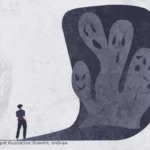
There are no limits to human imagination and it seems that there are no very well defined barriers to the “strange” needs that we can experience. There are people who show an exacerbated and irrational concern to keep their skin with brown tones and therefore experience the obsessive desire to tan, to the point of causing themselves skin damage. This disorder has been called: tanorexia.
Tanorexia has existed since ancient times, but nowadays, like anorexia nervosa or bulimia, the number of people who have joined its ranks has skyrocketed because “being tanned” corresponds to the canon of beauty that Western culture shares.
The term was baptized by some North American dermatologists who found a group of patients who came to their offices showing skin lesions caused by ultraviolet rays and, despite this, continued to be exposed to them.
The population most at risk are women between 17 and 35 years of age, although lately men are also becoming addicted to sunbathing; So much so that in a study carried out at the University of Richmond in Virginia, where 400 students took part, symptoms of tanning dependence were found in 25% of cases!
People who suffer from tanorexia, despite being tanned, always see their skin pale, wishing to obtain an even darker color. Not being able to achieve a sufficiently tanned tone generates feelings of anguish, guilt and anxiety. As they always perceive their pale skin, they alternate sessions of sun bathing with UVA rays and if they cannot receive their daily dose of radiation they can manifest the effects of a true abstinence syndrome. Most of these people are unaware of their addiction and those are only discovered by the dermatologist.
But beware! Experts alert us to the addictive nature of tanorexia, that is, sunbathing is not a simple whim that allows us to “be fashionable”. UVA rays from solariums trigger the production of endorphins, brain chemicals that produce the feeling of euphoria and relieve pain. Something strangely similar to the known effects of traditional drugs.
The World Health Organization already refers to a true epidemic of skin cancer: in the USA alone, more than a million new cases are registered annually; while in the United Kingdom one in five people gets skin cancer throughout their lives. Still 30 million Americans and 3 million Britons go to tanning salons every year despite the fact that 90% of skin cancer is associated with ultraviolet radiation.
Why does this happen?
1. We have no perception of risk, many think: “skin cancer is a disease that will never touch me” and,
2. We are too busy following the models of beauty that the media impose to stop us from thinking about the evil that we can cause ourselves or how useless it is to follow empty patterns or ideals imposed by advertising campaigns.
Draw your own conclusions.
Sources:
Heckman, C. J.; Egleston, B. L.; Wilson, D. B. & Ingersoll, K. S. (2008) A preliminary investigation of the predictors of tanning dependence.(Clinical report) American Journal of Health Behavior. 32(5):451-464.
Fox Chase Cancer Center (2008, September). Addicted To Tanning Beds? ‘Tanorexia’ Common Among University Students. Clinical Oncology Week.
Roy, R. (2009, Abril) Tanorexia: The Insidious Lure of Tanning Beds. Publicado en: https://www.livescience.com/health/090408-tanorexia.html



